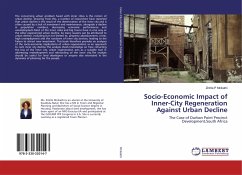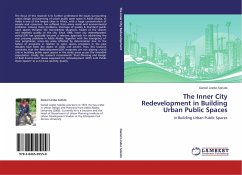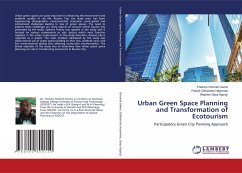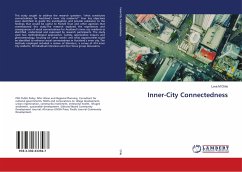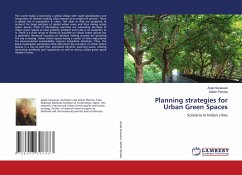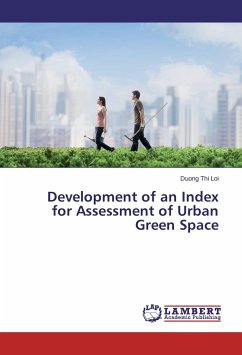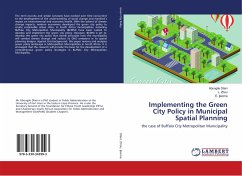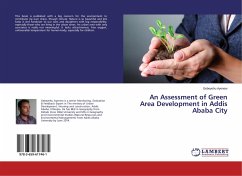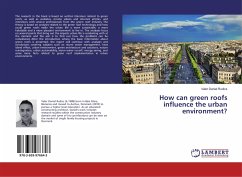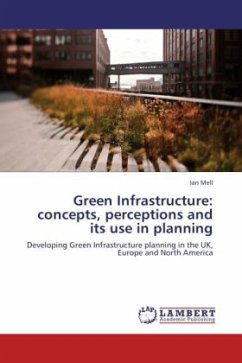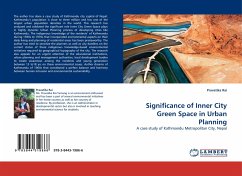
Significance of Inner City Green Space in Urban Planning
A case study of Kathmandu Metropolitan City, Nepal
Versandkostenfrei!
Versandfertig in 6-10 Tagen
32,99 €
inkl. MwSt.

PAYBACK Punkte
16 °P sammeln!
The author has done a case study of Kathmandu city capital of Nepal. Kathmandu's population is close to three million and has one of the largest urban population densities in the world. This research has analyzed and validated the significant role Inner City Green Space plays in highly dynamic Urban Planning process of developing cities like Kathmandu. The indigenous knowledge of the residents' of Kathmandu during 1930s to 1970s that incorporated environmental aspects on their daily living and planning of residential areas has been praiseworthy. The author has tried to sensitize the planners a...
The author has done a case study of Kathmandu city capital of Nepal. Kathmandu's population is close to three million and has one of the largest urban population densities in the world. This research has analyzed and validated the significant role Inner City Green Space plays in highly dynamic Urban Planning process of developing cities like Kathmandu. The indigenous knowledge of the residents' of Kathmandu during 1930s to 1970s that incorporated environmental aspects on their daily living and planning of residential areas has been praiseworthy. The author has tried to sensitize the planners as well as city dwellers on the current status of these indigenous knowledge-based environmental initiatives required by geographical topography of the city. The research also appeals for an urgent attention of the educational institutions, urban planning and management authorities, local development bodies to create awareness among the residents and young generation between 13 to18 yrs on these environmental issues. Author dreams of Kathmandu of 1960s that constituted a perfect balance and harmony between human intrusion and environmental sustainability.



